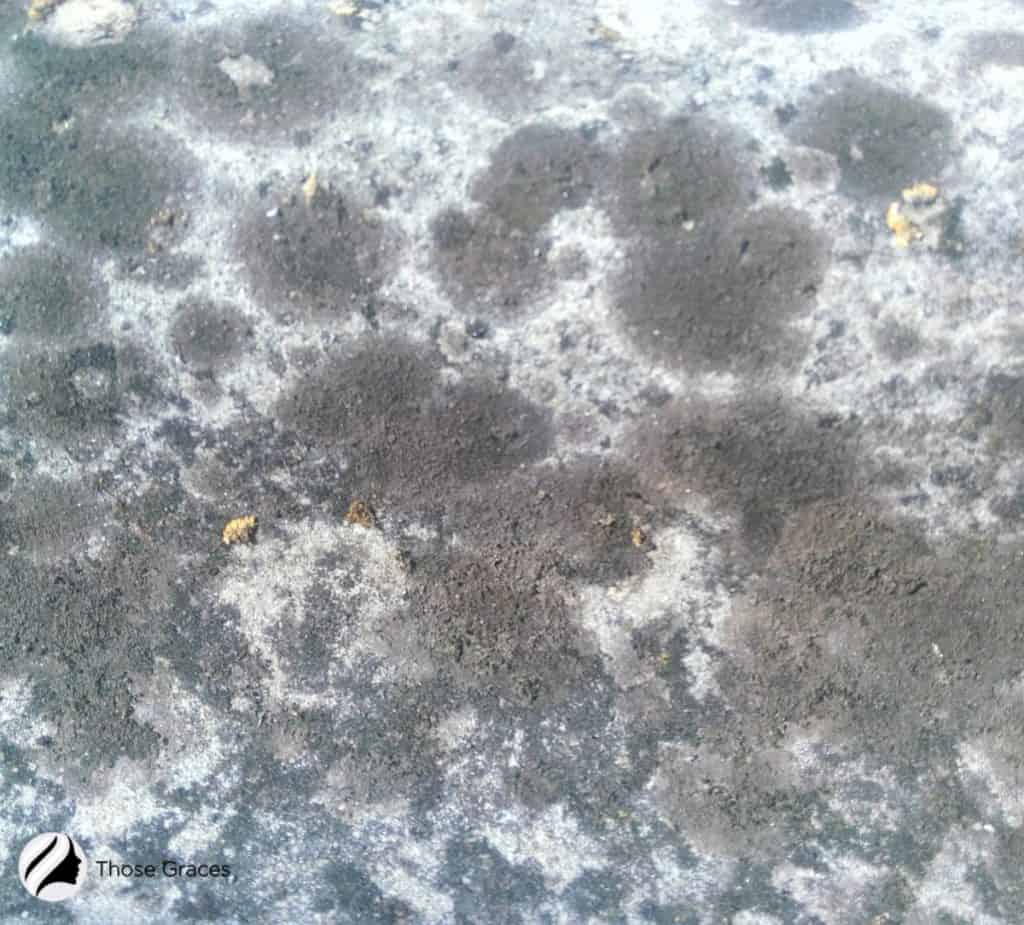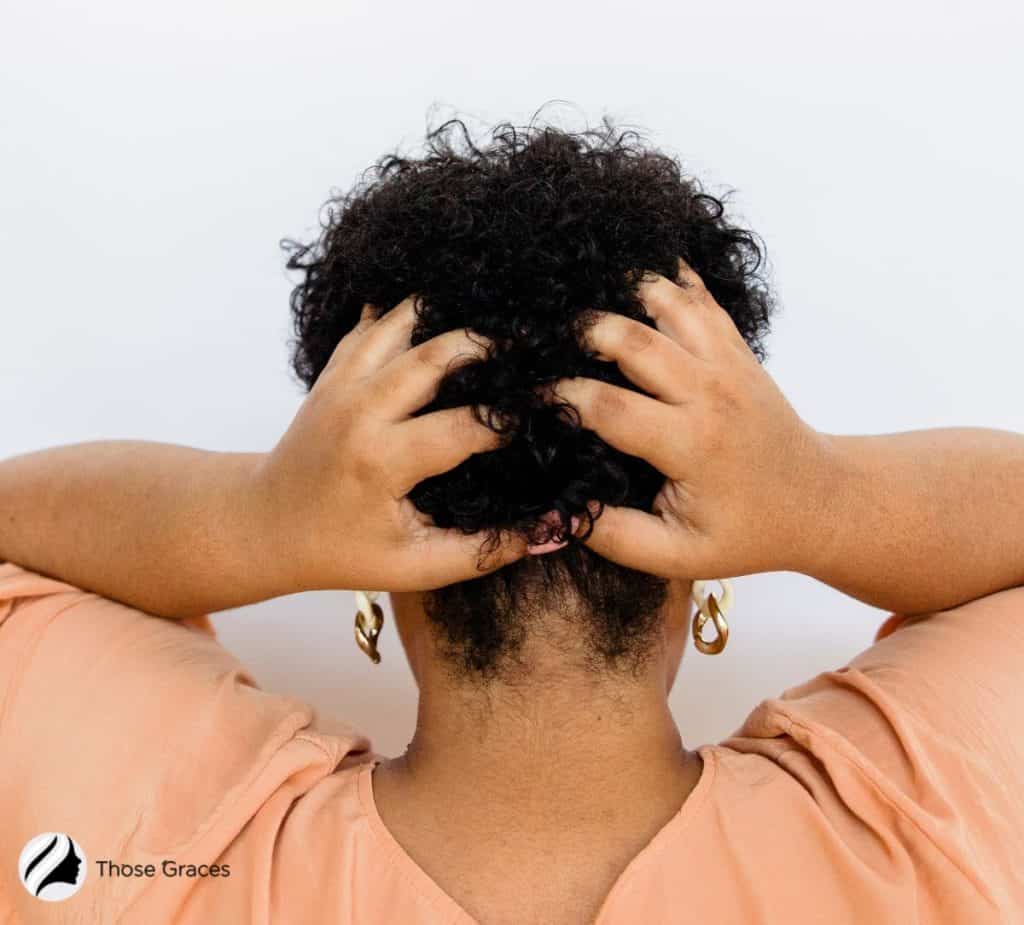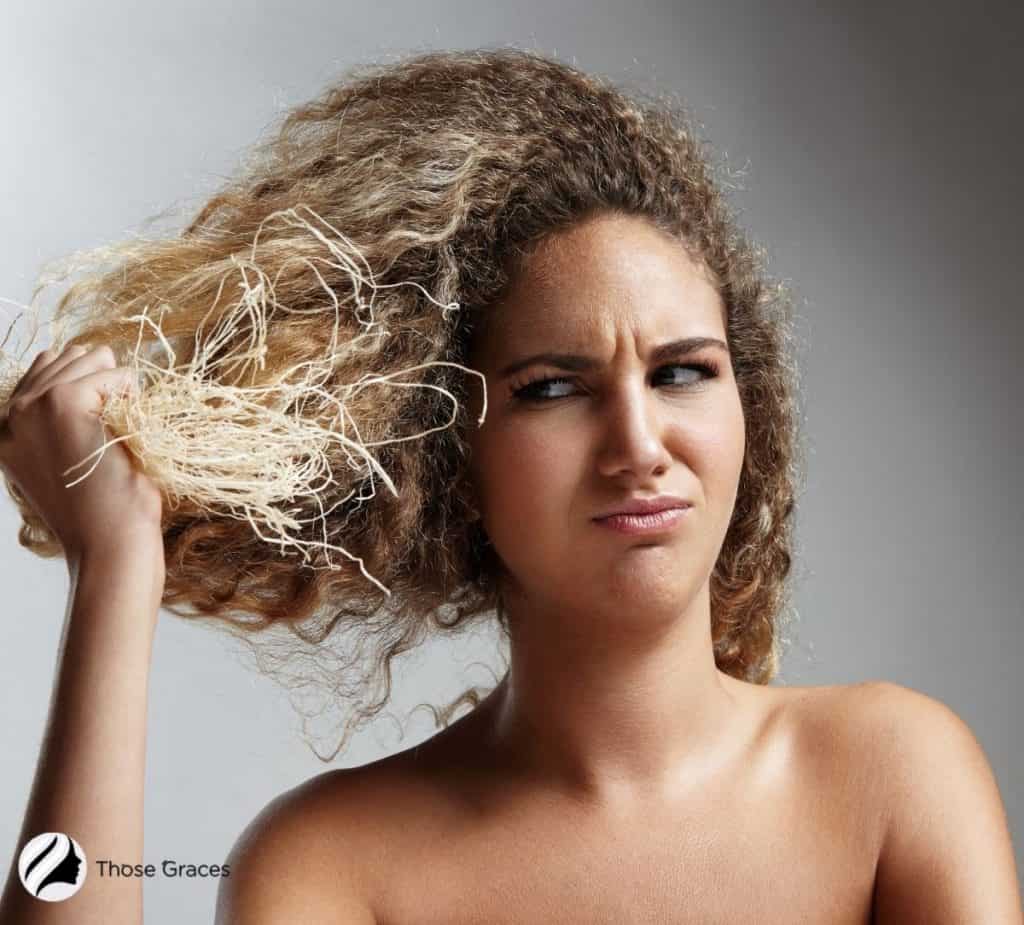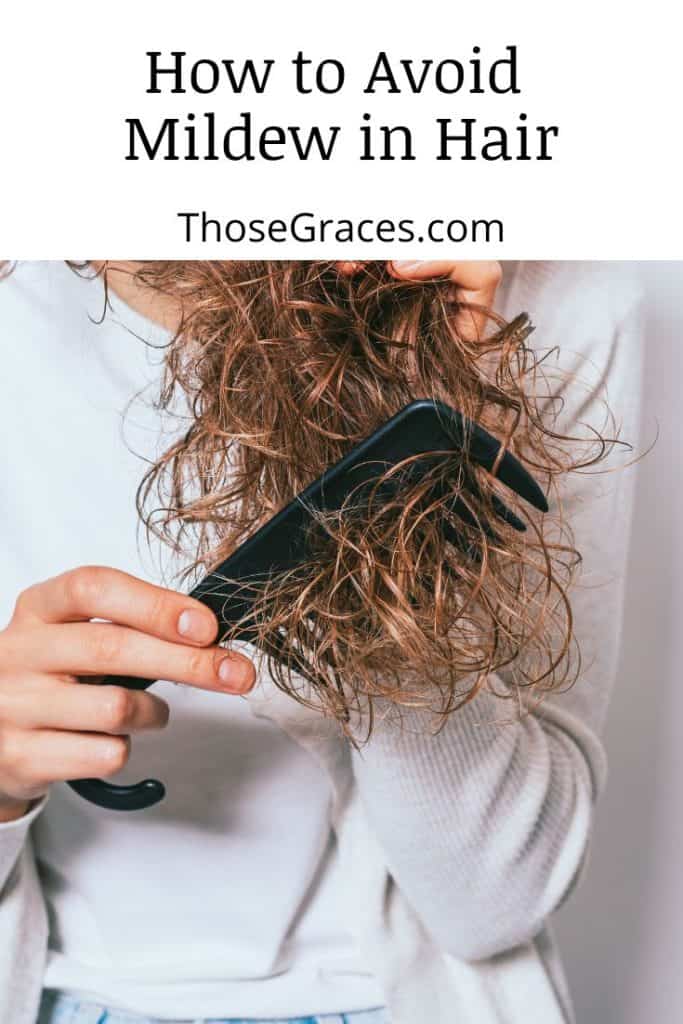Have you had to suffer countless days of “musty smell”, and nights of an itchy scalp because of MILDEW IN HAIR?
Well, you are in the right place if this is you. I’ve been there many times, and I can tell you for free that it was never a nice experience.
This is why I will be sharing with you in the next few minutes how I was totally able to get rid of mildew in my hair and avoid it since then.
Table of Contents
Can You Get Mildew in Your Hair?

Mildew is a microscopic mold or fungus that appears as a superficial whitish growth on organic matter or living plants.
Mildew can be found in damp environments where moisture levels are high. It is known to sometimes cause fungal infections with prolonged exposure, a feature similar to all molds according to MEDLINE PLUS. (1)
It is no news that mildew can be found in human hair because of the hair’s ability to hold moisture. Mildew hair can also be called “moldy hair”, and it is known by the musty smell it gives off.
As stated earlier, mildew does not randomly grow in any hair. It is found only in moist or damp hair, because of its need for moisture to thrive. This makes wet hair a perfect breeding ground for its adaptation.
It’s quite common especially for people in the natural hair community because of their tendency to over-moisture their heavy hair so that it appears softer.
Proper hair care and scalp hygiene are a necessity so as not to give room for moldy growth on wet human hair.
Other infections common to hair are Tinea Capitis (also known as scalp ringworm), Black Piedra, and other Scalp yeast infections. They are known to cause noticeable hair loss.
What does mildew look like in hair?
Mildew in hair is easy to know by its gray, yellow, or white color. It appears as inflamed patches in wet or damp hair and gives off a musty hair smell.
READ MORE: Does Scalp Psoriasis Smell Bad?
Why Does My Hair Smell Like Mildew?

A number of things can cause you to have musty, mildew-smelling hair, some of which include;
- Excessive sweating, as this leaves hair moist, thereby giving room for mold growth and a musty smell. It is advisable to free hair from any restraints and leave hair loose and down while sleeping for air drying sake.
- Underwashing of hair may allow oils or sebum to build up in hair. This leads to oily scalp which will also lead to accumulation of scalp mildew because mildew thrives in damp conditions. Hence, it causes musty hair odor too.
- Hairstyles such as ponytails, buns, locs can also retain moisture thereby causing moldy growth and smelly hair.
How Do I Know if I Have Mildew in My Hair?

You will know if you have mildew in your hair when you notice any of these mold symptoms;
- Redness
- Scaly Patches
- Swelling
- Warmth around the infection
- Pain
- Scalp lesions or blisters
How to Get Rid of Mildew in Your Hair?
Some of the treatments to maintain scalp health when your hair smells like mildew include the use of hair care products such as:
- Antifungal shampoos to wash hair repeatedly until the scalp is entirely free of mildew. Wash hair repeatedly for a few days and monitor closely until the entire scalp is free from mildew.
- Medicated shampoos to wash hair such as Sulfate-rich Clarifying Shampoo. It helps get rid of build-up from hair and debris, by breaking down dirt and oil. People with poor scalp hygiene should use thoughtful hair care routines to avoid the build-up of scalp sweat.
- Tea tree oil is an essential oil with its antifungal properties that can help get rid of mildew for good. You can mix the oil with water in a spray bottle, and saturate your hair with the mixture. Leave the mixture to sit on the hair and scalp for close to half an hour, then wash with antifungal shampoo and condition for more efficiency. Then rinse hair with warm water and let hair dry before you even style or think of covering. You can also choose to directly buy essential oil products made of tea tree oil instead of having to take your time to mix this at home. Tea tree oil also works for itchy scalp caused by dandruff.
CHECK: The Best Shampoo for Smelly Hair
How to Avoid Mildew in Hair?
“Hair brings one’s self-image into focus; it is vanity’s proving ground. Hair is terribly personal, a tangle of mysterious prejudices.” ~Shana Alexander (2).
The best way one can avoid mildew in hair is to guard one’s hair jealously by keeping hair dry at all times after shampooing, sweating, or shortly wetting hair.
Use Smectic (Astringent) if you sweat in your hair a lot to remove oil or dandruff from the scalp.
READ MORE:
- Why Does My Hair Smell After I Wash it?
- HOW TO GET RID OF SMELLY SCALP AND THE REASONS WHY IT SMELL
FAQs
Can mildew make you sick?
Mildew in hair also gives rise to common scalp infections such as itchy scalp, inflamed skin, etc.
Is it possible for mildew to develop on wet hair?
Does sleeping with wet hair cause mildew in hair?
What happens if you get mold in your hair?
Can mildew make your hair fall out?
How can I get rid of mildew in hair?
Conclusion
Mildew in hair is fairly common for the average person. So you need not fret, as molds thrive in damp conditions, and people do not always see a need to keep their scalp dry.
The best way to avoid moldy hair or mildewed hair is to keep hair dry and clean at all times.
If you have to remove mildew from hair after noticing symptoms such as white or gray patches of skin, use clarifying shampoo, antifungal shampoo treatments, or essential oil spray treatments containing tea tree oil.
These treatments work for every form of moldy hair disaster.

Have you experienced mildew in hair? Please let us know below!
Resources
- 1. “Molds.” MedlinePlus, U.S. National Library of Medicine, https://medlineplus.gov/molds.html.
- 2. Wadhawan, Arpita. “Hair Care Quotes – Every Girl Should Read!” WomensByte, 17 Apr. 2019, https://www.womensbyte.com/haircare-quotes-every-girl-should-read/.
- 3. “Hair Loss from Mold in the Home.” Mold Advisor, https://www.mold-advisor.com/hair-loss.html#:~:text=An%20allergic%20reaction%20to%20mold,body%20hair%20in%20many%20instances.


![How To Curl Short Hair With A Straightener [10 Best Ways]](https://thosegraces.com/wp-content/uploads/2024/07/How-To-Curl-Short-Hair-With-A-Straightener-211x150.jpg)
